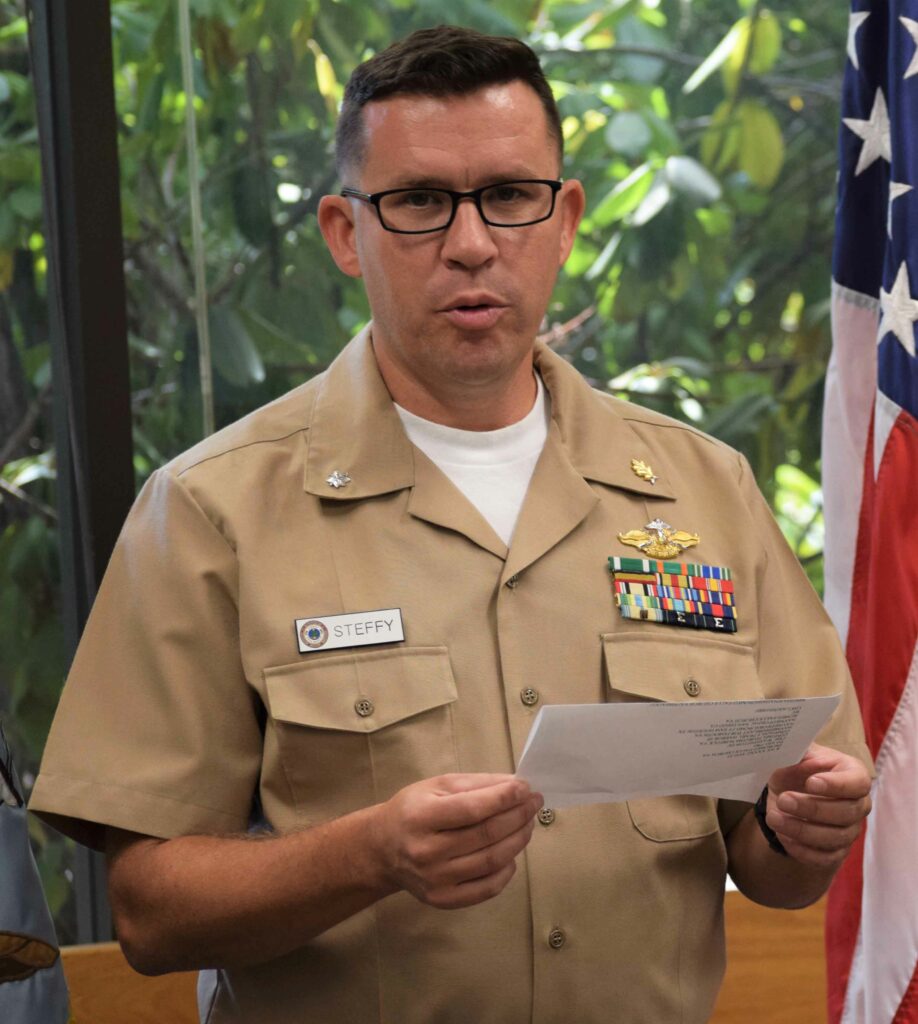Dentistry isn't the first thing that comes to mind when it comes to sailor and submarine readiness. But having to be taken off a vessel in the distant Pacific Ocean because of a tooth abscess would not be the best way for a sailor to win the favor of his commander.
The Navy Dental Corps consists of about 1,300 active duty and reserve dentists who are experts in 15 specialties. Their work is necessary to allow sailors to spend months on missions without having obvious problems that could temporarily derail a mission.
Nowhere is this more evident than at Naval Hospital Bremerton, Washington, and its three medical clinics, where staff provided dental care to more than 12,300 active-duty beneficiaries in 2023, including soldiers and airmen from Joint Base Lewis-McChord in Tacoma, Washington.
"Our mission is readiness, which means we keep sailors and warriors ready to go ... when the time is right," said Navy Lieutenant Commander Doug Steffy, an oral and maxillofacial radiologist assigned to the Naval Medical Readiness Training Command in Bremerton. "The goal is to get them to the point where they won't need any dental services for at least 12 months."

Steffy is one of only 11 oral and maxillofacial radiologists in the entire Navy - there are even fewer in the Air Force and Army - so he spends a lot of time reading advanced digital images for Bremerton and its clinics and other commands.
"I'm getting imagery for the entire Pacific Northwest. It doesn't matter if it's Army, Navy or Air Force." He said.
The Bremerton clinics that Steffy commands only treat active duty service members, many of whom are submariners between the ages of 18 and 24. All patients are divided into four groups:
Class 1: These patients have no dental needs and are 100% healthy.
Class 2: They have no dental needs that will cause a problem in the next few months.
Class 3: There is a sufficiently severe problem, such as tooth decay, that could potentially cause problems for the patient in the next year and interrupt their deployment.
Class 4: The patient has not been to the dentist for more than a year.
"Our goal is to get everyone into Class 1," Steffy said.
Class 4 is a rarity within the military. Unlike civilians who like to avoid the dentist, service members do not have that choice.
"We can make you come," Steffy said. "You can't go to sea until we tell you you're ready."
This screening requirement helped detect some serious problems early, Steffy said, such as tumors whose growth patients couldn't feel.
"We've had a few cases where patients have come to us and we've identified an abnormal area of their head and neck, their bone, and then we've done a follow-up biopsy and picked up a really malignant lesion, excised it and solved the problem," Steffy said. "If they had waited a few more years, who knows."
Navy Medical Readiness Training Command clinics in the Pacific Northwest are able to do a great job thanks to advanced digital technology, including computer-aided drilling and milling machines that can print dentures, implants and other dental items. For example, root canal and crown procedures are completed much faster with this technology, saving a significant amount of money.
"[At the crown] it used to take 10 to 14 days - you came in, we did the procedure, we put you on a temporary [cork] and they sent you away. You would come back in about two weeks and we would cement the final product," Steffy said. "Now they can come in and be out in two hours with the final product."
Fit to Serve: they are the best of the best
One notion Steffy would like to dispel: that the care provided by active-duty Navy dentists is somehow inferior to that provided by civilian dentists.
"We're all trained in the same way as all private dentists around the world," said Steffy, who attended dental school at the University of California and completed his residency at the University of Texas at San Antonio. "There is no military dental school. ... The difference is, I'm not trying to sell you a cure. I'm just telling you what you're gonna get."
Military dentists keep up with private practice standards and match the technological advances found in schools and institutions.
"I don't have a license from the Navy. I'm licensed by the state of Washington, so I have to follow the exact same standards as every dentist in the state." Steffy said. "We are also subject to the same disciplinary problems. ... In fact, we're probably more accountable than a private practice because we have peer review, which means that every month a different dentist has to review five of my procedures and say, 'Yes, these meet the standard of care.'"
A network of expertise and leadership opportunities
Steffy, a married Marine Corps veteran with three children, says his family loves the experiences that come with moving duty stations every few years. But he knows he's in the minority when it comes to military dentists. He said most of those who enlist leave after four years of duty, so finding capable dentists who are willing to stay in the service is always a priority.
"I'm always trying to move talent up the ranks and keep good doctors and people in top leadership positions," He said. "I would encourage people not to be afraid to consider military service when it comes to health care."
Steffy said private practice has its downsides, including feeling isolated and having to maintain a business on your own. But there are plenty of fellow professionals in the military to turn to for help, advice or to learn a new skill.
"I have direct access to surgeons, radiologists, comprehensive dentists who have been doing this for 20 years, and we don't compete with each other for patients or money," He said.
Another advantage - he gained valuable lessons in leadership.
"Mentoring all these different people ages 18-55 and helping us all achieve our goals together has been rewarding for me," He said.
Pentagon/ gnews - RoZ



